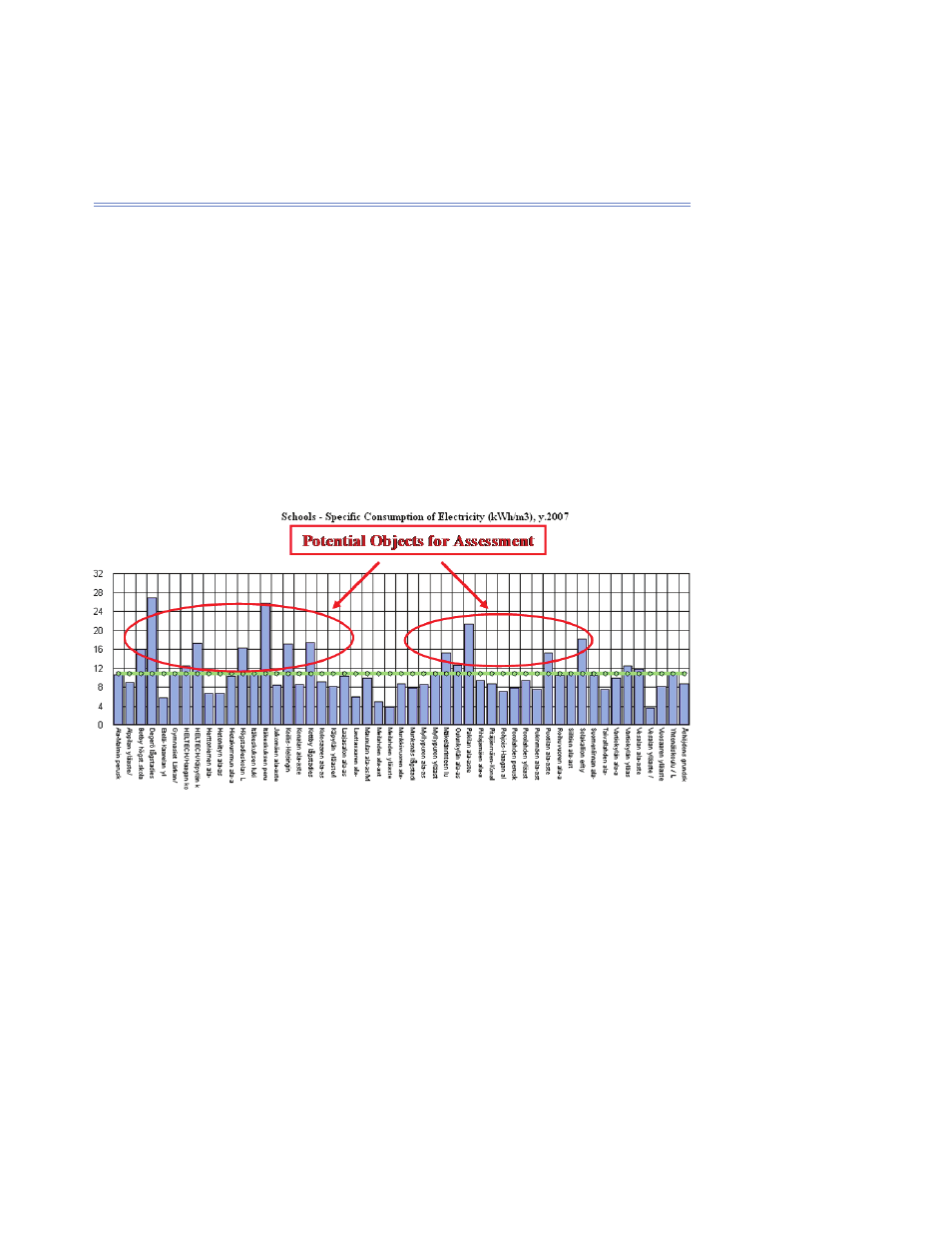Step 2.2: benchmark energy data – Retrotec USACE User Manual
Page 33

Chapter 2 11
importance cannot be overstated, that is, “well planned and prepared is already
half done.”
Step 2.2: Benchmark Energy Data
When monitoring is organized and consumption data is produced for several
buildings, energy benchmarking can be carried out on building and building
stock levels. In benchmarking energy consumption in similar types of buildings
are compared with each other. Benchmarking will highlight the buildings that
waste the most energy (potential energy conservation measures); these can
then be analyzed in more detail. This way, targets for Level I–III assessments
can be selected. Figure 8 shows an example of this kind of use of monitoring
data. Based on monthly meter-reading, yearly consumption of electricity in
about 50 school buildings in the city of Helsinki has been produced and visu-
alized. Schools where energy consumption (kWh/m
3
) is clearly above average
should be fi rst included in the assessment program to clarify reasons for sig-
nifi cant deviations.
Figure 8. Monitoring enables benchmarking and selection of objects for Level I–III actions.
In Level I–III assessment, measurable targets (estimates) for energy sav-
ings achievable via different conservation options can be defi ned. After the
implementation of these measures, the real infl uence in the consumption pat-
terns must be analyzed. Verifying the savings of implemented measures is a
fundamental part of assessment but impossible without well-organized moni-
toring and continuously updated consumption fi gures. The simple equation
below is the starting point for target-oriented energy assessment:
Energy Savings = Baseline Energy Use – Postinstallation Energy Use
Well-organized monitoring offers a sound basis to assess the effectiveness
of the assessment scheme itself as well. Based on real examples and continu-
